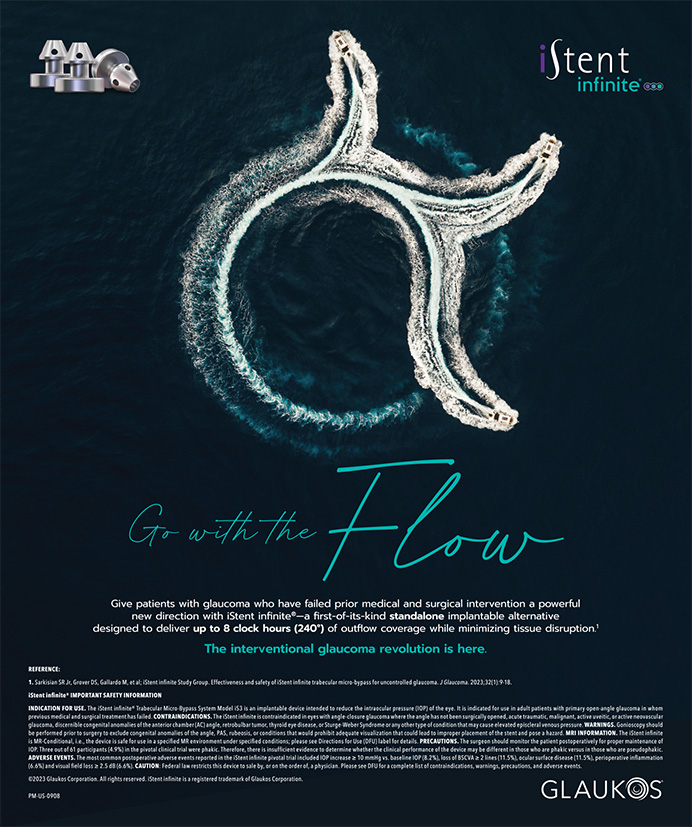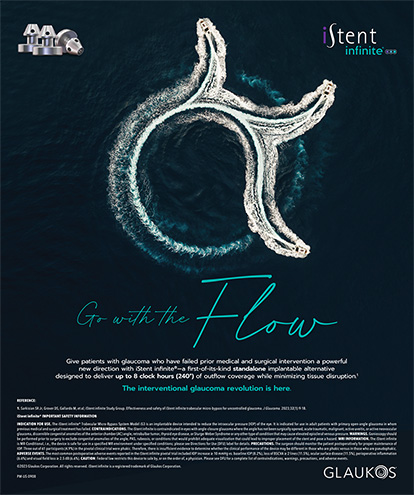As the medical monitor for Avedro, Inc., I have seen interest in corneal collagen cross-linking (CXL) grow dramatically during the past few years. The procedure's promise as the first modality to slow the progression of ectatic corneal diseases excites ophthalmologists and patients alike.
In March 2012, Avedro submitted a new drug application to the FDA based on the first multicenter, controlled clinical trials of CXL for the treatment of keratoconus and corneal ectasia. The in-depth analysis of this study fully outlined the successful outcomes of the CXL trials. In the trial, patients were randomized to either a treatment or a control group. To assess the efficacy of CXL, the primary outcome indicator that my fellow investigators and I looked at was the difference in the change in maximum keratometry (Kmax), as measured by corneal topography over time, between the treatment and control groups. With more than 350 eyes treated for keratoconus and ectasia, our findings were as follows.
Looking at the outcome of Kmax change (topographyderived maximum keratometry), we found a 2.60 D difference in the average change from baseline in the CXL-treated group versus the control group in patients with keratoconus; the treatment group improved, whereas the control group progressed. Similarly, we found a 1.40 D mean difference in Kmax in the treated versus control group in the patients with ectasia. Both groups of patients met the study endpoint of a difference of 1.00 D or more in the mean change in Kmax from baseline between treatment and control.
In both the keratoconus and ectasia groups, mean UCVA and BSCVA improved in the treated patients. In fact, approximately 28% to 33% of patients experienced an improvement of more than 2 lines.
I now have the pleasure of serving as the medical monitor for Avedro's accelerated CXL study, A Multi-Center, Randomized, Placebo-Controlled Evaluation of the Safety and Efficacy of the KXL System With VibeX (riboflavin ophthalmic solution) for Corneal Collagen Cross-Linking. My fellow investigators and I will evaluate the safety and efficacy of accelerated (4-minute) CXL performed with Avedro's KXL System for reducing maximum corneal curvature. In this study, patients will be randomized to a treatment arm or a sham control group. Treatment will involve 30 mW/cm2 of ultraviolet A illumination for 4 minutes after the administration of riboflavin. This dosage contrasts with the 30-minute administration of ultraviolet A light at a power of 3 mW/cm2 that was used in previous studies. We hope that the new treatment modality will advance the clinical science of CXL. We are also pleased that the addition of the American-European Congress of Ophthalmic Surgery's study sites will provide more information regarding optimal treatment parameters.
Peter S. Hersh, MD, is a professor of clinical ophthalmology and chief of cornea and refractive surgery and UMDNJ-New Jersey Medical School in Newark, New Jersey. He is a visiting research collaborator at Princeton University in Princeton, New Jersey, and is in private practice with the Cornea and Laser Eye Institute-Hersh Vision Group in Teaneck, New Jersey. Dr. Hersh may be reached at (201) 883-0505; phersh@vision-institute.com.


